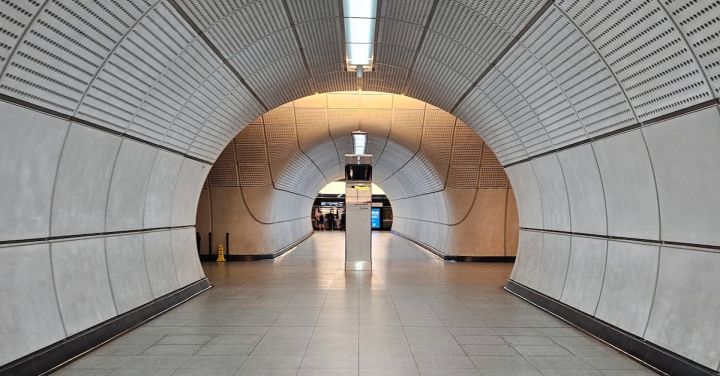Tunnels have played a crucial role in the development of railways. These underground passages have allowed trains to navigate through mountains and across bodies of water, overcoming natural obstacles and connecting distant places. From the earliest railway tunnels to the modern engineering marvels, these structures have shaped the world of transportation.
One of the earliest examples of railway tunnels is the Box Tunnel in England. Constructed in the early 19th century, it was a feat of engineering at the time. The tunnel stretches for almost two miles and passes through the Box Hill, connecting London to the city of Bath. Its construction required innovative techniques, as engineers had to deal with challenging geological conditions. The Box Tunnel set the stage for future tunnel construction and demonstrated the possibilities of railway transportation.
As railways expanded across the globe, so did the need for tunnels. The St. Gotthard Tunnel in Switzerland is a prime example of a tunnel that revolutionized rail travel. Completed in 1882, it was the longest railway tunnel in the world at the time, stretching over nine miles through the Swiss Alps. The construction of the St. Gotthard Tunnel pushed the boundaries of engineering and showcased the determination to overcome natural barriers. It remains a vital link in the European railway network to this day.
In addition to mountainous terrains, tunnels have also been essential for bridging bodies of water. The Channel Tunnel, linking the United Kingdom and France, is an iconic example. Completed in 1994, it is the longest undersea tunnel in the world, stretching over 31 miles beneath the English Channel. The Channel Tunnel was a monumental engineering project that required the collaboration of multiple countries. Its completion transformed travel between the UK and mainland Europe, making it faster and more convenient.
Tunnels have not only facilitated transportation but have also sparked innovation in tunneling techniques. The construction of the Gotthard Base Tunnel in Switzerland is a testament to this. Completed in 2016, it is the longest railway tunnel in the world, stretching over 35 miles. The Gotthard Base Tunnel is an engineering marvel, using state-of-the-art technology to overcome the challenges of tunneling through the Swiss Alps. Its completion marked a significant milestone in tunneling history and demonstrated the continuous advancement of engineering capabilities.
Tunnels have not only shaped the physical landscape but have also had a profound impact on society. They have brought people closer together, connecting cities and countries. They have facilitated trade, tourism, and cultural exchange. Tunnels have made the world smaller and more accessible, opening up new possibilities for exploration and development.
In conclusion, the tunnels that built railways have played a pivotal role in shaping the world of transportation. From the early railway tunnels like the Box Tunnel to the modern marvels like the Gotthard Base Tunnel, these structures have allowed trains to overcome natural barriers and connect distant places. Tunnels have pushed the boundaries of engineering and sparked innovation in tunneling techniques. They have transformed travel, bringing people closer together and opening up new opportunities. The impact of tunnels on society is immeasurable, and their significance in the development of railways cannot be overstated.
